Focus area one: businesses are best placed to understand and manage their risks
This focus area sought feedback on how businesses and organisations currently make their decisions about work health and safety, and the reasons behind these decisions.
On this page I tēnei whārangi
Submissions summary
- Most submitters noted that they had measures in place to identify and manage risk, with many taking these actions to manage risks, as good practice, or because the law requires it. Most consider their actions to be reasonable and effective.
- Most respondents understand their work health and safety obligations very well. Of those that answered negatively, most considered that clearer guidelines would help them to understand their obligations better. A generally even proportion of respondents considered that overlapping duties between PCBUs were managed well versus not well managed.
- Despite the high proportion of submitters answering positively about their understanding of obligations (89%), a lack of regulatory clarity and ambiguity was a common concern raised further below in Focus Area 2.
Illustrative quotes from submissions
Submission from a business in the manufacturing sector with fewer than 20 employees – “there shouldn’t be anything onerous about having good work habits embedded into an organisation. But sometimes commonsense and sheer practicality are pushed to one side in favour of over-prescriptive compliance requirements. We appreciate the need for a rigorous Health and Safety Act but we can, as a company, feel overburdened and bogged down by “red tape” even though we are a willing complier.”
Submission from a worker in a large construction business – “Yes and no, these actions are good for managing the safety of individuals on a daily basis, however because we are creating a Health and Safety system to cater to the lowest common denominator, it has significantly reduced the next generation from using their own common sense therefore reducing skill levels by killing off a more practical approach to health and safety.”
Themes reflected during the Roadshows included:
- Most note they are trying to do the right thing, but compliance costs are too high, and there is a need for greater certainty about what they need to do under the Act, and how they need to do it.
- Risk management is a part of business as usual, and if it can be embedded at the start of a project, it is easier and less costly.
- A significant issue was the proliferation of pre-qualification requirements in the context of procurement/tendering, subcontracting and overlapping duties. These add to cost and confusion but do not necessarily improve work health and safety outcomes. Comments included:
- Paper-based policies and attestations add significant cost but are filed away after tendering, as they do not provide any practical guidance on the ground.
- Local and central government procurement practices drive a lot of paperwork/policies that don’t impact work health and safety on the ground.
- There is confusion about who is responsible on-site with multiple subcontractors and the perception that head contractors and procurers can force risks down onto smaller firms.
- Costs come when things change on the ground, in dynamic situations requiring workers to use their judgement.
Feedback on specific Focus Area One survey questions
Thinking about just the key actions your business or organisation takes to manage work health and safety risks:
What are these actions?
Of the 273 respondents that provided at least one action that their organisation took:
- Most noted that they or their employer had some kind of risk control in place or had methods to identify and monitor risk.
- Many noted that they or their employers put in place physical, training and administrative controls and engaged with workers to manage risk.
- Some noted that they or their employer employed qualified people or sought information to manage risk.
- Few employers noted that they worked with other PCBUs to manage risk.
- 1% of respondents reported having no actions to address risk.
A large proportion of workers answered this question by noting the actions they see business owners undertaking. This is why there are more responses to the ‘employer’ options as opposed to the ‘worker’ options.
Table 5. What key actions does your organisation take to manage health and safety risks?
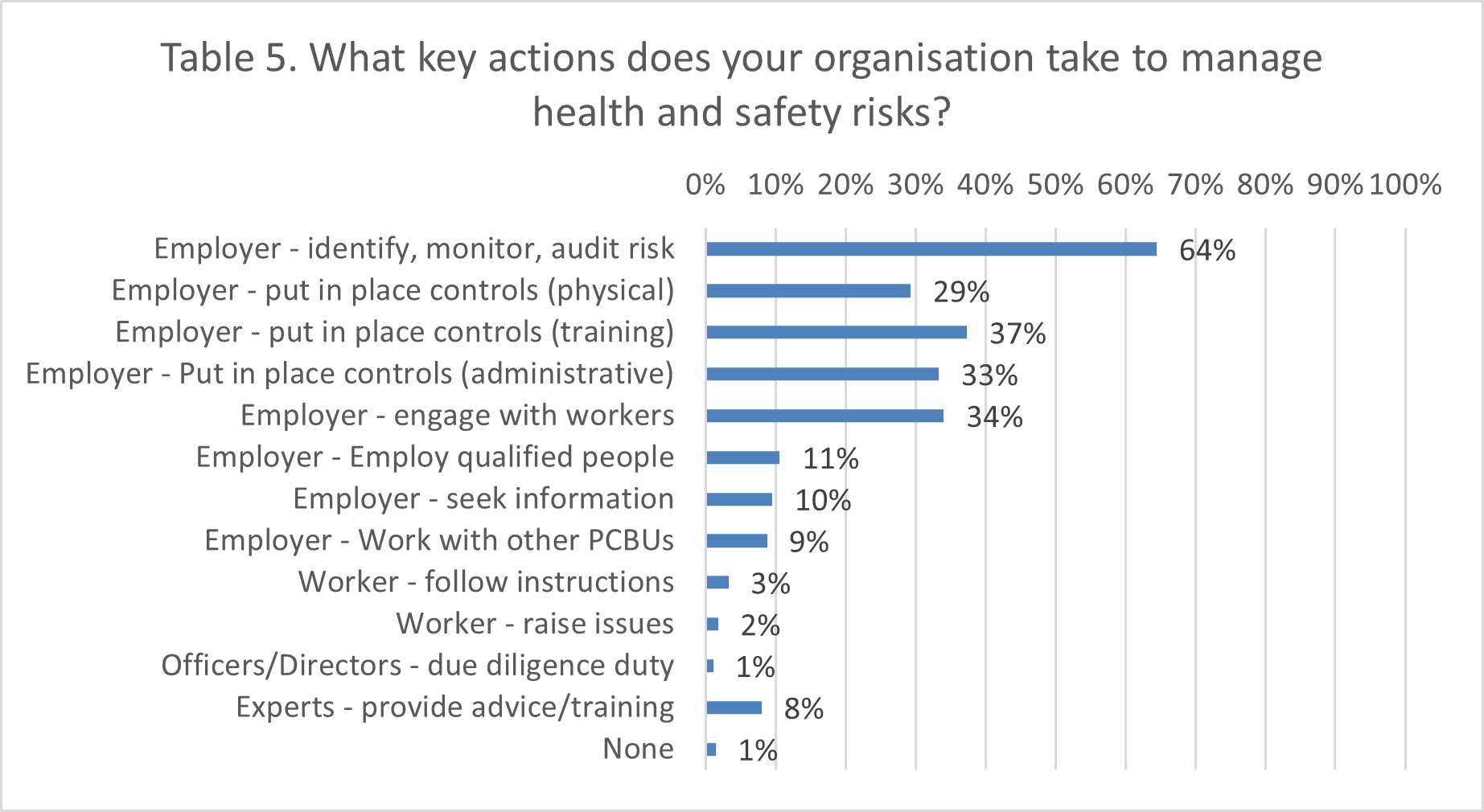
Data from chart
Why does your business take these actions?
Of the 264 respondents that answered this question:
- Many responders noted that their business took these actions to manage risks, or that it was good practice, or because the law required it.
- Some undertook these actions for moral reasons, or because it improved productivity.
- Few noted they undertook these actions to prevent penalties for breaching laws and regulations, or for other reasons.
- Of the 250 respondents that replied to whether they thought these actions are reasonable, 89% agreed that they were.
- Of the 250 respondents that replied to whether they think these actions are effective, most thought they were effective, and some thought they were partly or not effective.
Table 6. Why does it take these actions?
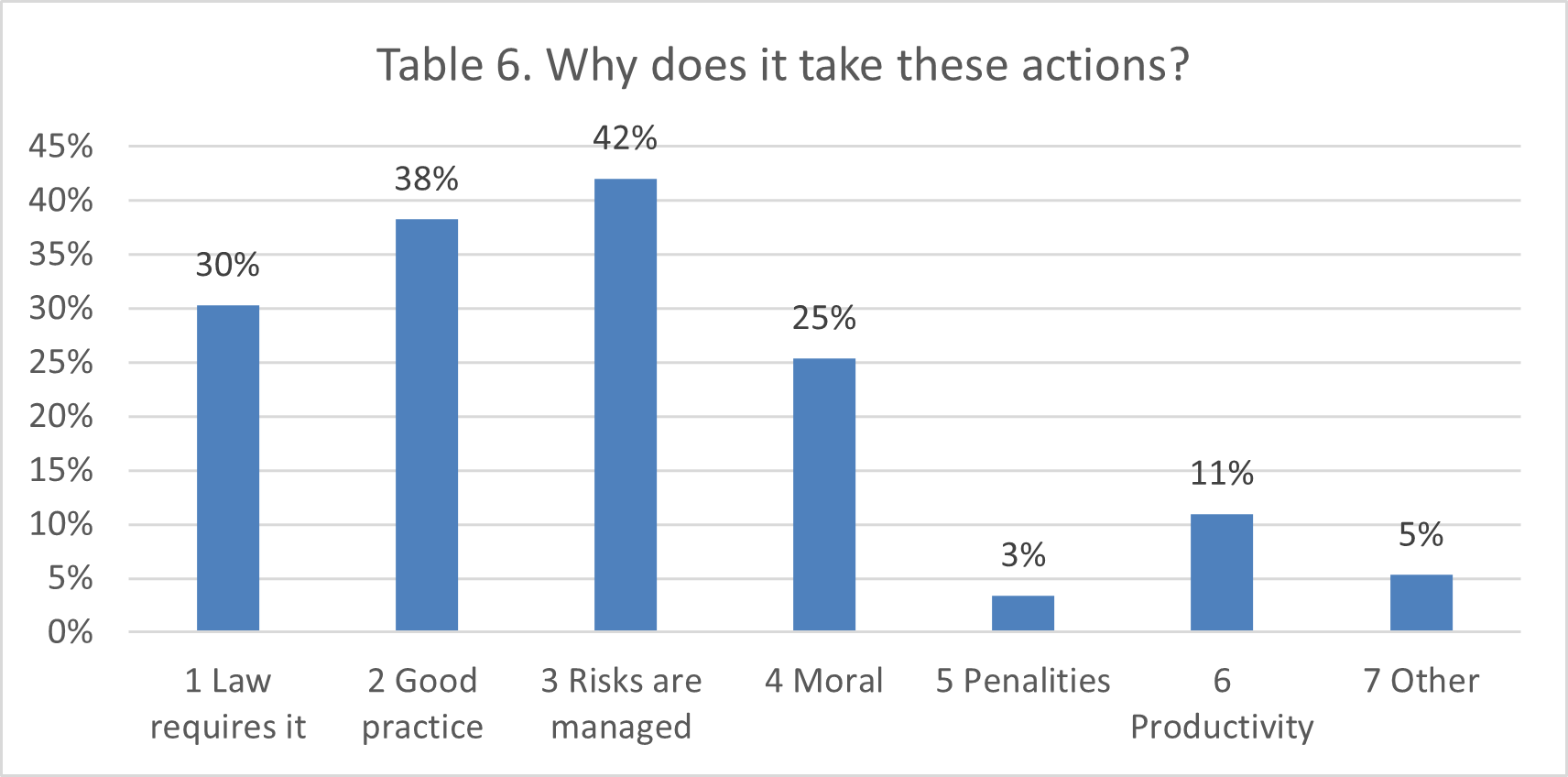
Data from chart
Chart 7. Do you think these actions are effective in managing health and safety risks?
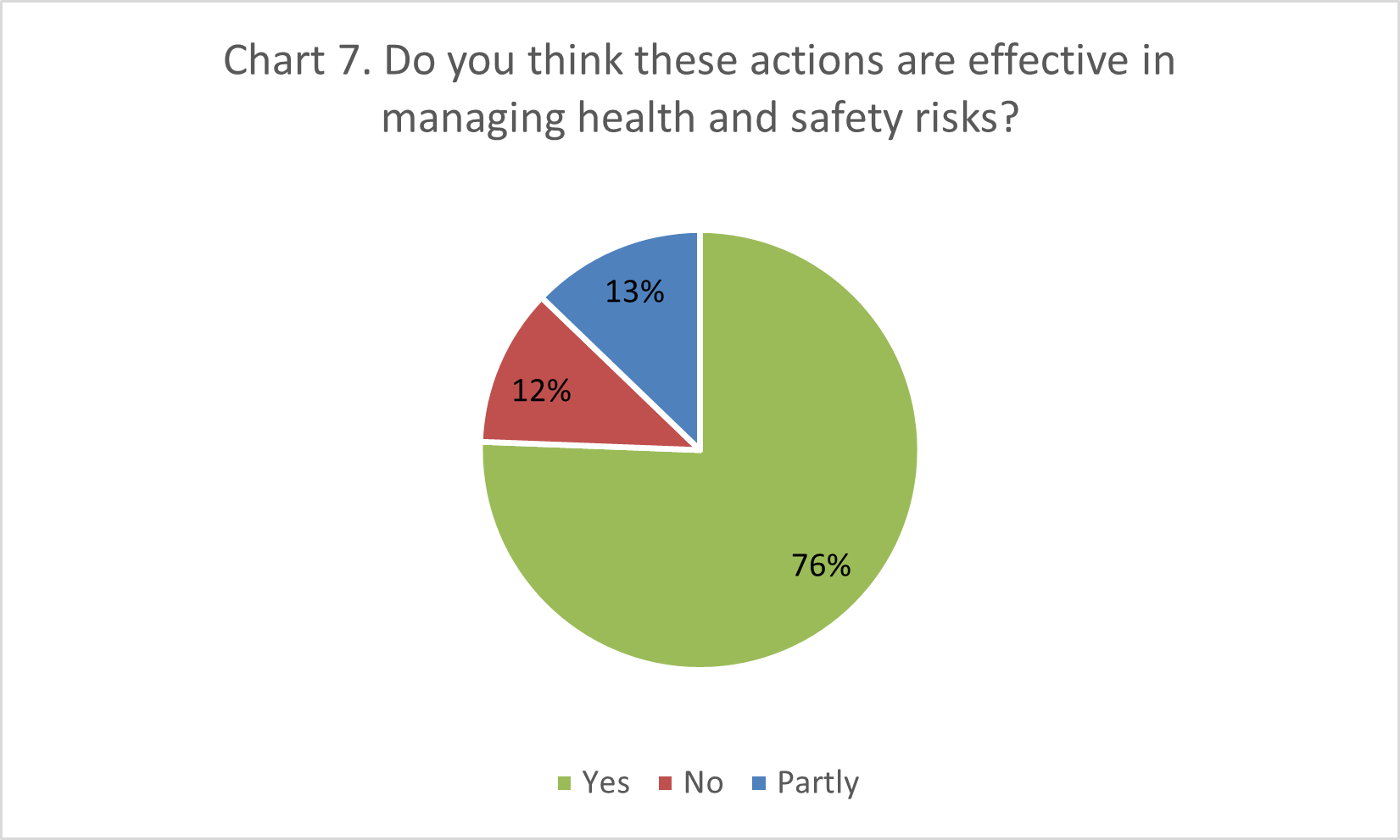
Data from chart
How well does your business or organisation understand its work health and safety obligations?
Of the 285 respondents that answered this question:
- Most understood their work health and safety obligations very well, many quite well, some not very well and a few not at all.
- Of those that answered negatively (not very well and not at all), actions that would help them improve their understanding included (50 respondents):
- Most identifying clearer guidelines.
- Some identifying guidelines being less complex, simpler or engagement with the Regulator on their responsibilities.
Chart 8. How well does your business or organisation understand its work health and safety obligations?
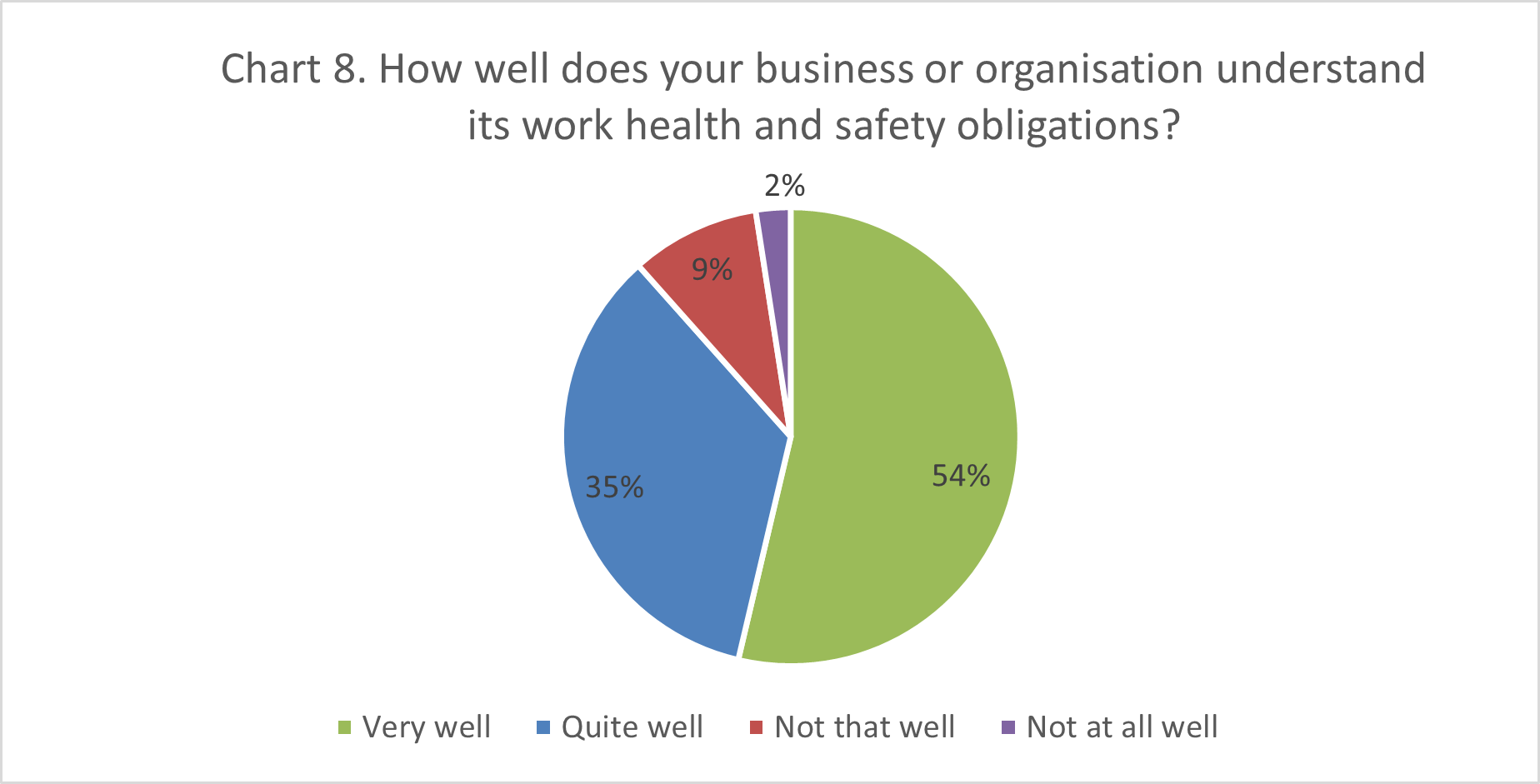
Data from chart
Chart 9. If “not that well” or "not at all well" what do you think would help you to understand?
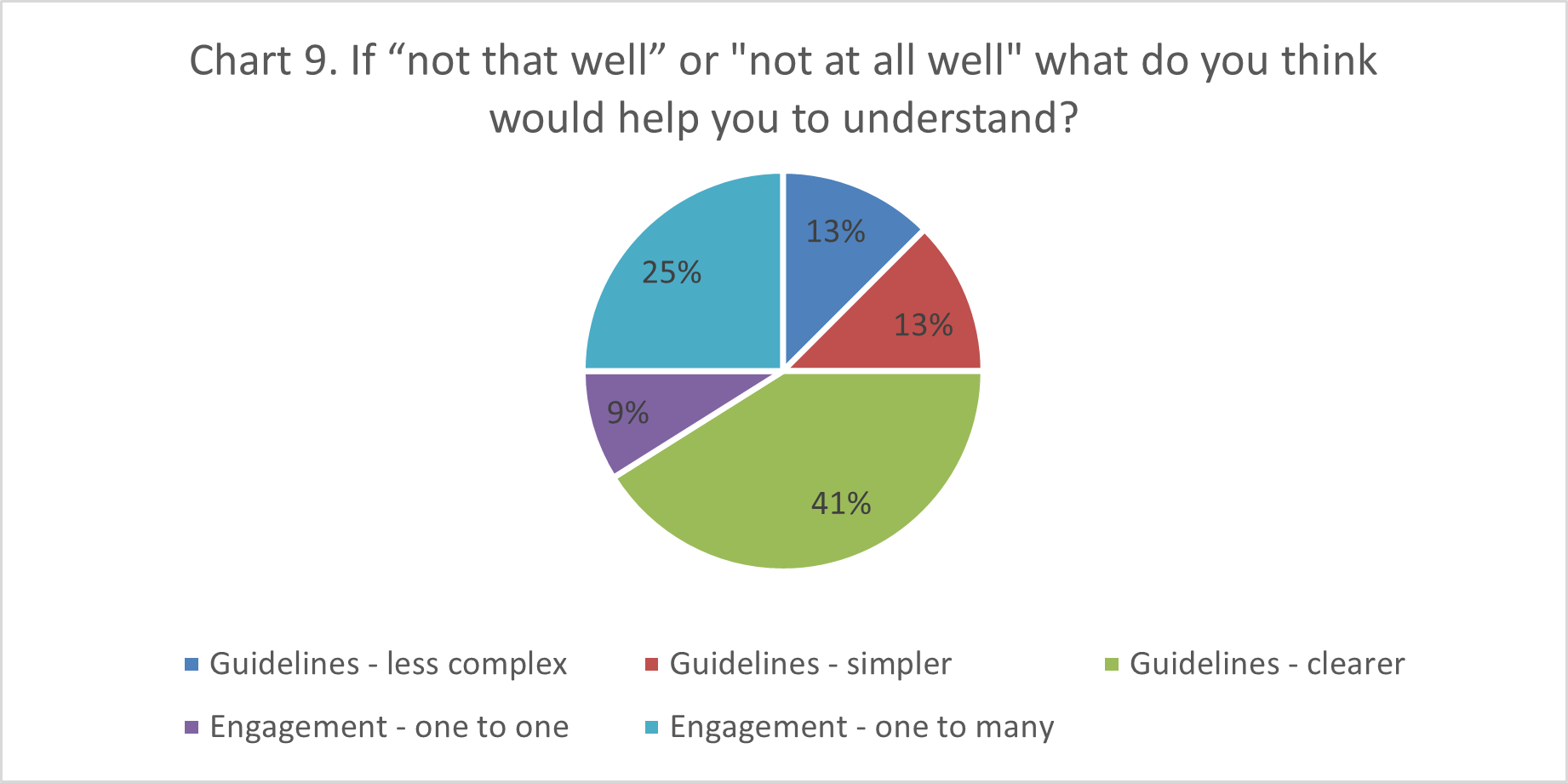
Data from chart
Thinking about just the key actions the business or organisation takes, about how much would it cost per year to comply with your work health and safety obligations?
Submitters described their costs of compliance in different ways, making it difficult to calculate precise costs across different submitters. For example, some provided general descriptions such as ‘part of doing business’ or vague or partial descriptions of costs that were impossible to accurately quantify.
Of the respondents that provided specific per annum cost estimates, the most common proportions were within the $200K - $1m and $1m+ ranges, or less than $5K. This generally reflects the proportions of large and small employers that made submissions.
Table 10. Costs of compliance range
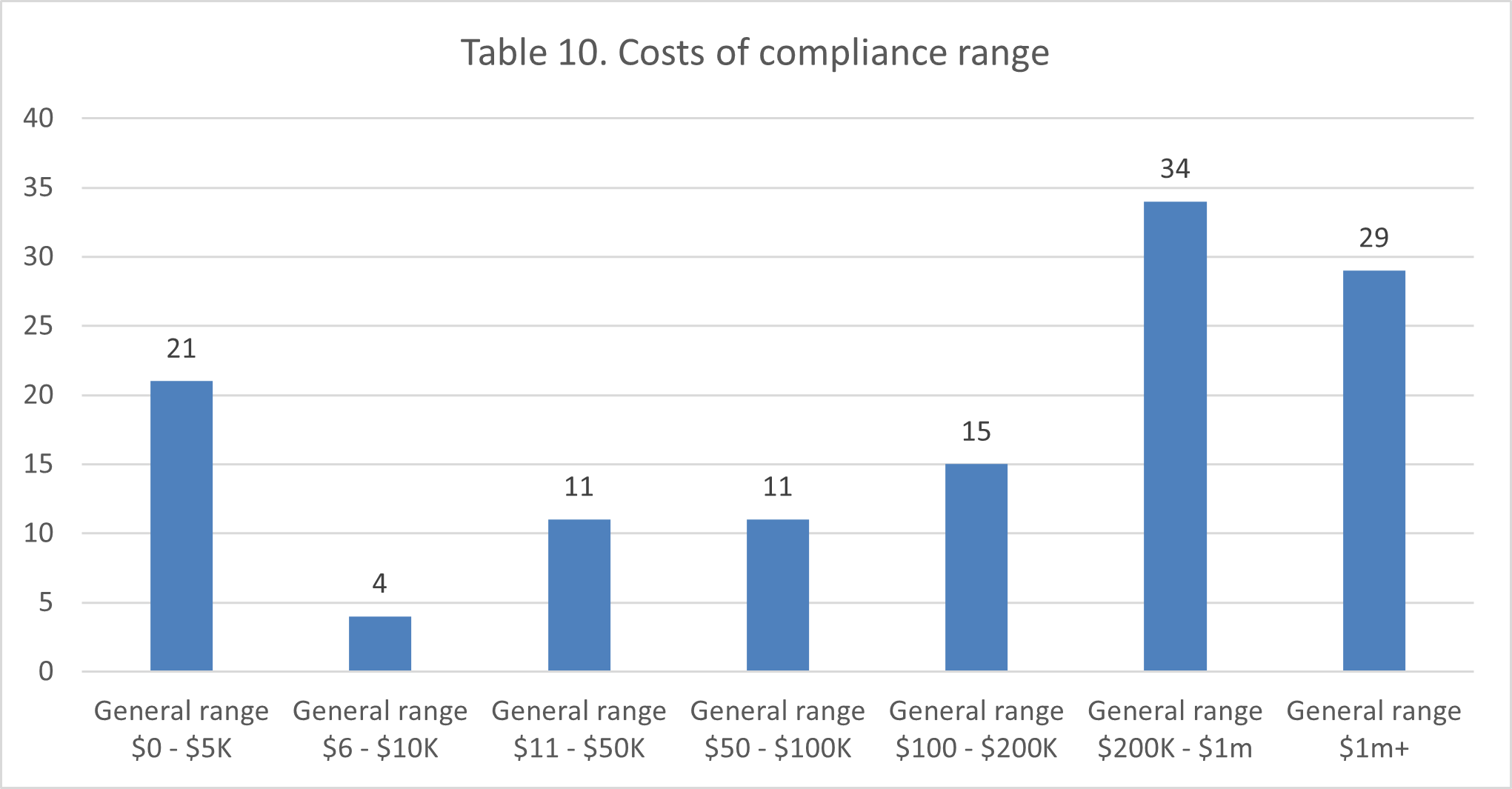
Data from chart
Where your business has overlapping duties with other businesses, what has been your experience in working together to manage work health and safety risks?
Of the 230 respondents that answered this question, there was a generally even proportion of those who considered that overlapping duties were managed well through informal or formal processes, and those who considered they are not managed well via formal, informal or by having no processes.
Chart 11. Where your business has overlapping duties with other businesses, what has been your experience in working together to manage health and safety risks?
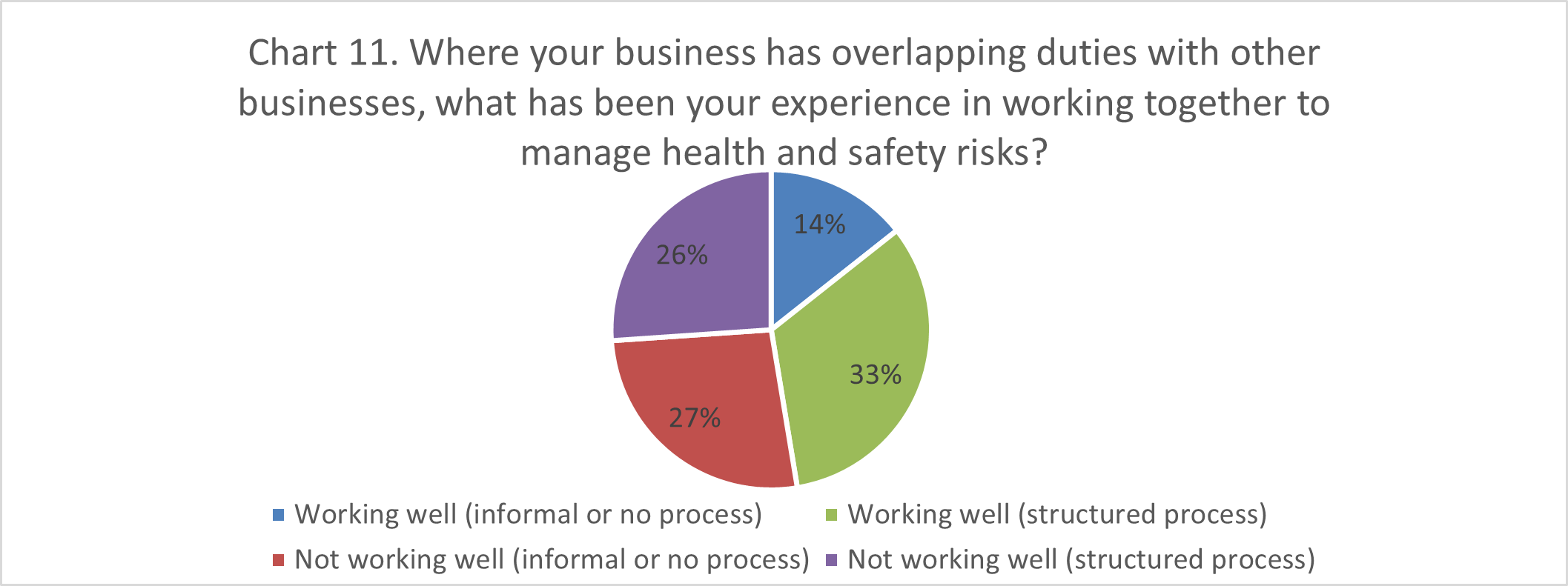
Data from chart

